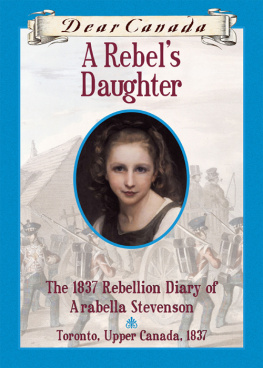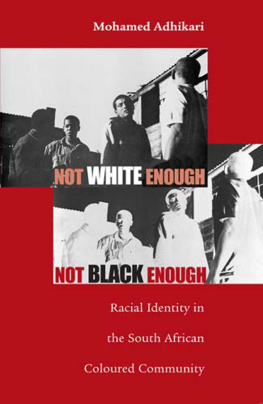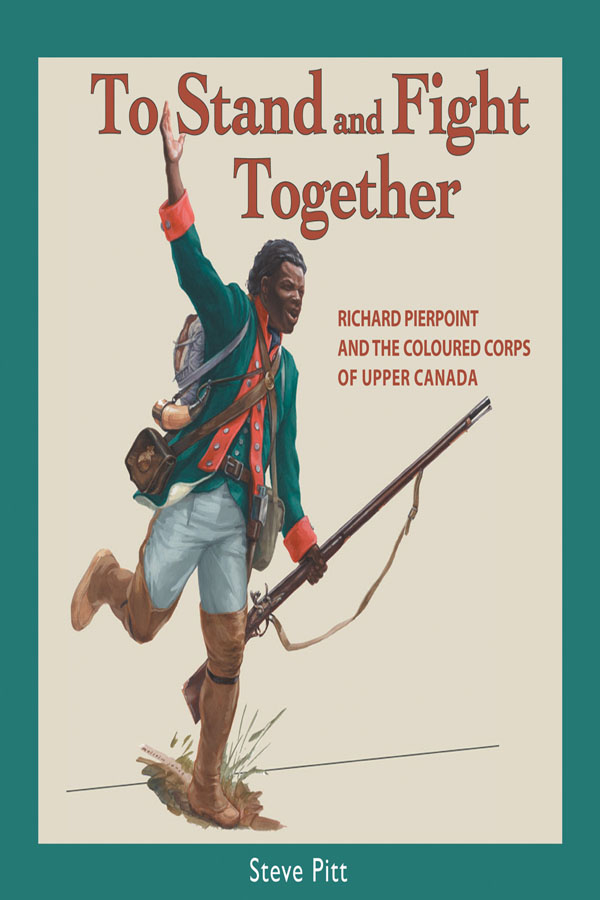To Stand and Fight Together
To Stand and Fight Together
RICHARD PIERPOINT
AND THE COLOURED CORPS
OF UPPER CANADA
Steve Pitt

Copyright Steve Pitt, 2008
All rights reserved. No part of this publication may be reproduced, stored in a retrieval system, or transmitted in any form or by any means, electronic, mechanical, photocopying, recording, or otherwise (except for brief passages for purposes of review) without the prior permission of Dundurn Press. Permission to photocopy should be requested from Access Copyright.
Editor: Michael Carroll
Design: Jennifer Scott
Printer: Webcom
Library and Archives Canada Cataloguing in Publication
Pitt, Steve, 1954
To stand and fight together : Richard Pierpoint and the coloured corps of Upper Canada
Includes bibliographical references.
ISBN 978-1-55002-731-0
1. Pierpoint, Richard, 1744?-1838. 2. Great Britain. Army. Runcheys Coloured CorpsHistoryJuvenile literature. 3. CanadaHistory17911841Juvenile literature. 4. Black loyalistsOntarioBiographyJuvenile literature. 5. SoldiersCanadaBiographyJuvenile literature. 6. CanadaHistoryWar of 1812Regimental historiesJuvenile literature. I. Title.
UA602.R85P58 2008 j971.3004960730092 C2007-905743-8
1 2 3 4 5 12 11 10 09 08

We acknowledge the support of the Canada Council for the Arts and the Ontario Arts Council for our publishing program. We also acknowledge the financial support of the Government of Canada through the Book Publishing Industry Development Program and The Association for the Export of Canadian Books, and the Government of Ontario through the Ontario Book Publishers Tax Credit program, and the Ontario Media Development Corporation.
Care has been taken to trace the ownership of copyright material used in this book. The author and the publisher welcome any information enabling them to rectify any references or credits in subsequent editions.
J. Kirk Howard, President
Printed and bound in Canada.
Printed on recycled paper.
www.dundurn.com
Dundurn Press
3 Church Street, Suite 500
Toronto, Ontario, Canada
M5E 1M2
Gazelle Book Services Limited
White Cross Mills
High Town, Lancaster, England
LA1 4XS
Dundurn Press
2250 Military Road
Tonawanda, NY
U.S.A. 14150
For my best friend, J. Kevin McGuffin, regimental sergeant major (retired), 48th Highlanders of Canada. And for all those who have served Dileas Gu Brath!
Contents
Acknowledgements
They say that writing is a solitary profession, and in many ways that is true. This book is the result of countless hours of sitting at my desk with no one to talk to except my dog, Poochini, sleeping on my feet. At the same time, over the past 20 years, I have relied heavily on the expertise of dozens of librarians, archivists, and fellow history nerds who have helped me unearth the long-buried facts of Richard Pierpoint and the Coloured Corps. I would like to acknowledge their hard work and support; this book wouldnt exist without their generous efforts. I would also like to thank the following: Parks Canada, Niagara Region, for allowing me to photograph Fort Mississauga and Fort George; and City of Toronto Culture and Fort York National Historic Site for permitting me to take photographs of the Brown Bess and Fort York. Finally, I would like to acknowledge and thank fellow author Eric Walters for giving me a boost of his boundless enthusiasm to jump-start this project again after I had stalled just yards from the finish line.
1 Fort James: West Africa, 1760
The hot African sun shone down upon a huge unnatural-looking structure that squatted like a bulldog stranded on a sandbar in the middle of the Gambia River. It was a fort made of stone and bricks, completely unlike the elegant tiny wood-and-wattle houses used by the local Africans. The fort sat on a small, triangular island barely large enough to support the main building and its two massive stone walls. Cannons glowered from gun ports on the walls, and armed men patrolled the tiny island twenty-four hours a day. The fort often seemed more in danger from nature than from human beings. High water threatened to wash away the tiny island during the rainy season. In the dry season the water ran so low people sometimes walked to the island from the nearby shore without getting their feet wet. A few scraggly trees provided almost no relief from the sun to the islands residents.
Yet, unbelievably, this island was one of the most valuable pieces of land in West Africa. In fact, so valuable was this island that it had violently changed ownership many times over the past 300 years. The walls and the cannons werent there to defend the fort against Africans. They were there to fight off other Europeans who were constantly trying to snatch this miserable little sandspit and claim it as their own. The French, the Dutch, and the Portuguese had invaded the Gambia River island many times. In 1719 even a company of Welsh pirates from the British Isles had briefly taken over the island before they were forced by heat and disease to go home.

Slaves being transported overland in Africa in the 1860s.
It was all about money. The fort was known as Fort James, named after James Stuart, Duke of York, in England. James was the leader of a group of British businessmen who, in 1660, were given a charter by Jamess brother, King Charles II, to found a company called the Royal Adventurers of England Trading into Africa (RAE for short). Despite their dashing name, the company made its fortune on human misery.
Fort James on the Gambia River was a trading post. From there the RAE traded British goods for African raw materials. The British wanted African gold, exotic animal hides, beeswax, gum arabic, ivory, and rare wood. But, most of all, they wanted human beings. An African could be sold at many times his or her purchase price as a slave in the British colonies of America.
For their part the Africans wanted British iron goods such as nails, cooking pots, and farm tools; glass beads for jewellery; and fine cloth, alcoholic drinks, and firearms. But gold required hard digging in the ground and a lot of luck. Beeswax and gum arabic involved days of back-breaking work and getting stung by thorns or insects. Wood had to be chopped down, hauled along the ground, and then floated down the crocodile-infested Gambia to get it to the fort. Wild beast hides required hunting and the danger of being bitten by fangs or gored by horns. By far the easiest and most profitable commodity to trade to the Europeans was other human beings.
Slavery wasnt new to Africa or anywhere else in the world. In Asia slaves had built the Great Wall of China and worked the salt mines that made the Chinese emperors wealthy and powerful. In Greece great philosophers debated the nature of reality and the universe while slaves toiled to feed and clothe them. In Rome slaves farmed the fields, erected the buildings, and produced most of the valuable metals that allowed the well-armed Roman legions to conquer most of Europe and North Africa. In Mexico and Central America slaves built huge pyramids and then were sacrificed to the gods of their owners, the Aztecs and Mayans.








